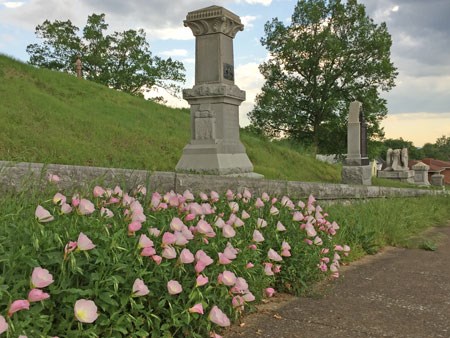Last updated: February 14, 2019
Article
Wildflowers of Orchard Knob

NPS/W. Wilson
University of Tennessee, Chattanooga
Orchard Knob in east Chattanooga was the scene of the opening shots in the Civil War Battles for Chattanooga in November 1863. From this hillside, General Ulysses S. Grant and other senior leaders of the Union Army watched the victorious assault on Missionary Ridge on November 25. In the 1890s, this small hillside was added to the newly-established Chickamauga and Chattanooga National Military Park, and monuments and other commemorative features quickly sprang up on its heights.
Like most areas of the park, Orchard Knob was preserved for its historic significance. However, historic preservation had an unintended consequence. Chattanooga grew exponentially during the late 1800s and first half of the 1900s, which led to the near complete loss of prairies and glades (open, rocky areas) once more common in the area. Orchard Knob represents one of the final remnants of these habitats left in Chattanooga. Today, it is a refuge for more than 200 species of plants, including seven that are rare in the state of Tennessee.

NPS/C. Barr (left) and Chicago Academy of Sciences, Cat #6513 Elizabeth Atwater Colelction, EEA-1954 (right)
Interestingly, this species is where Orchard Knob’s Civil War and botanical histories collide. On April 3rd, 1865, Major George W. Grubbs of the 42nd USCT collected and pressed a specimen of Fremont’s leather flower. Though his label reads only “Chattanooga,” it is plausible that he found his specimen at Orchard Knob, as it is both a historically significant and geographically prominent landmark, a site worthy of his exploration. His specimen is now preserved in perpetuity at the Chicago Academy of Sciences.

NPS C. Barr
